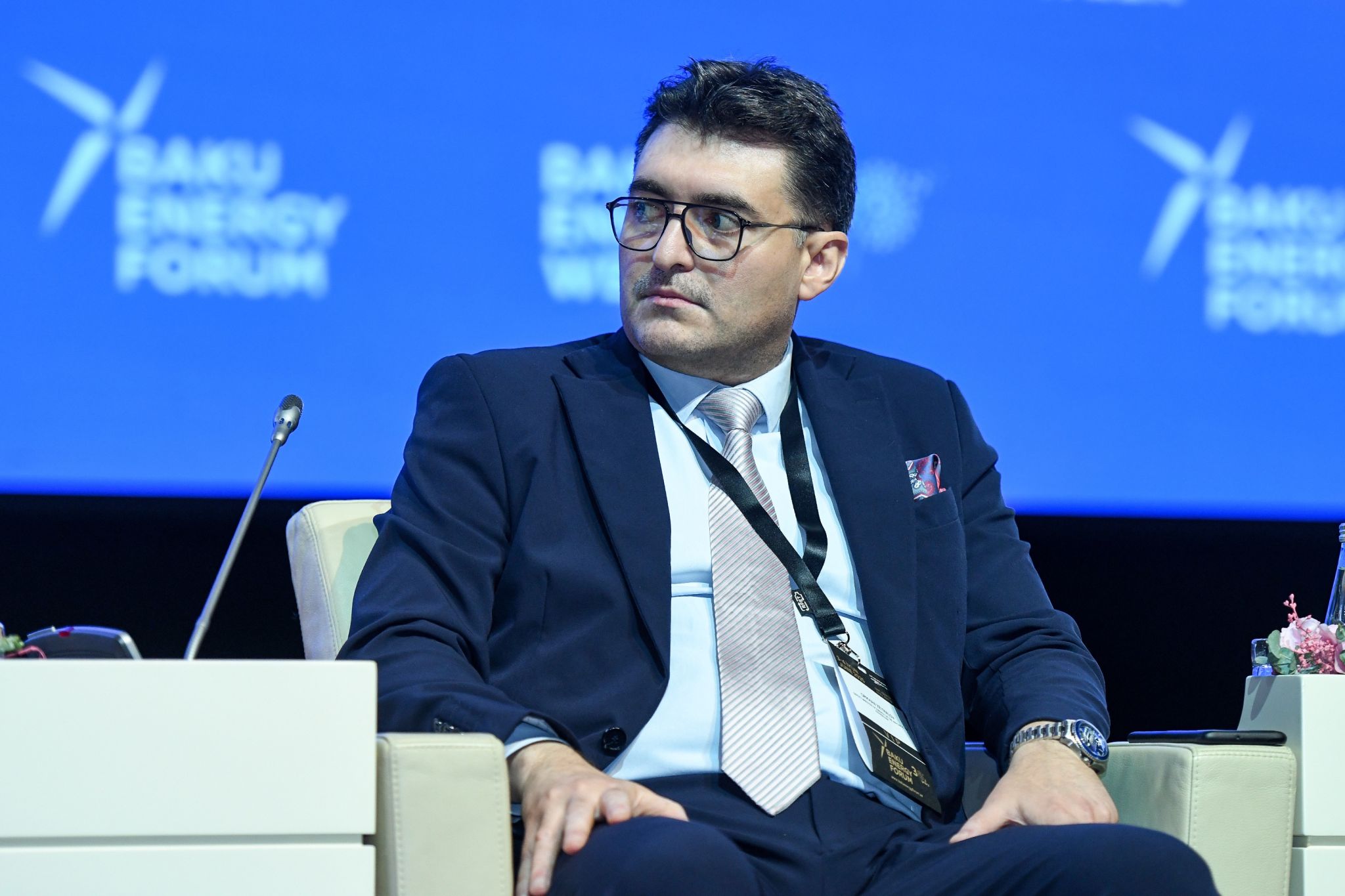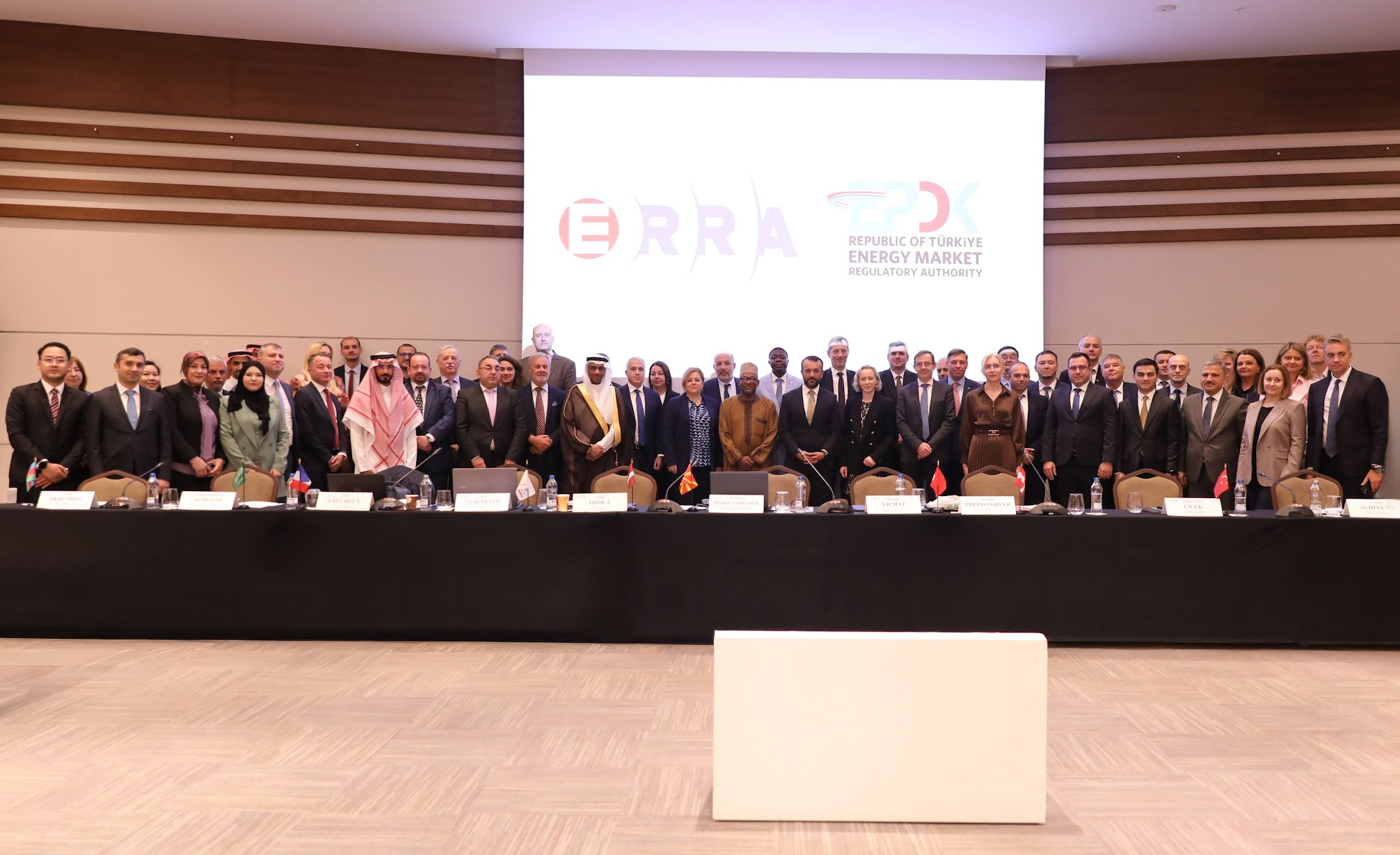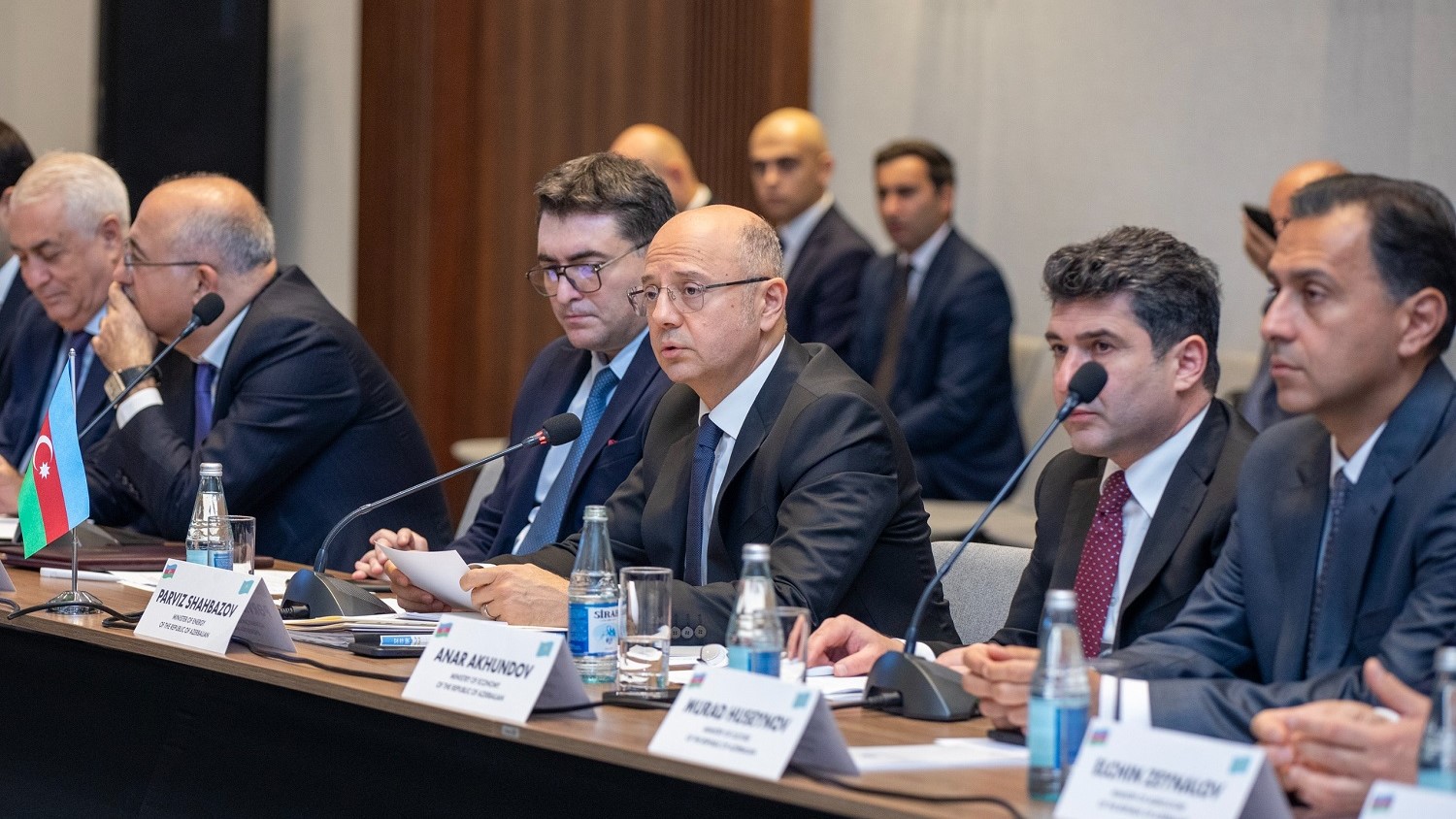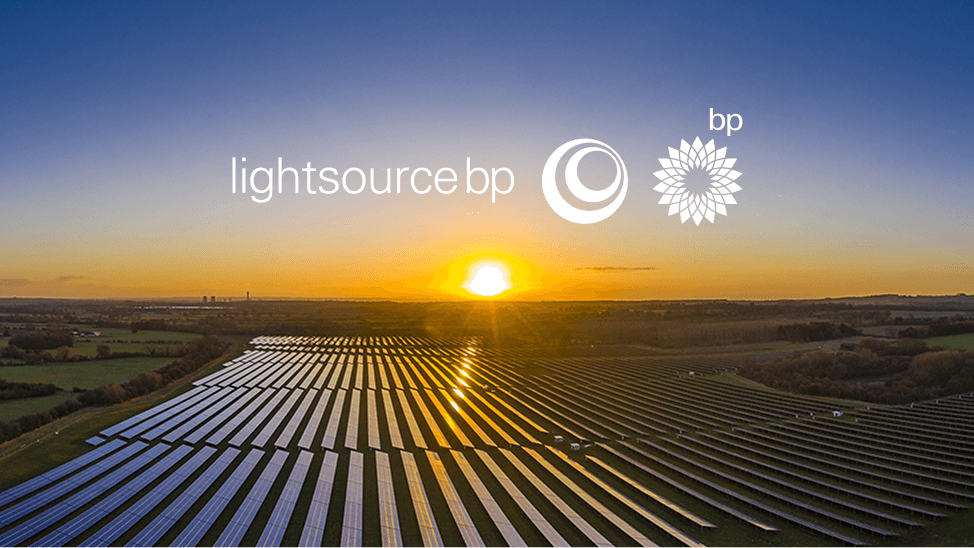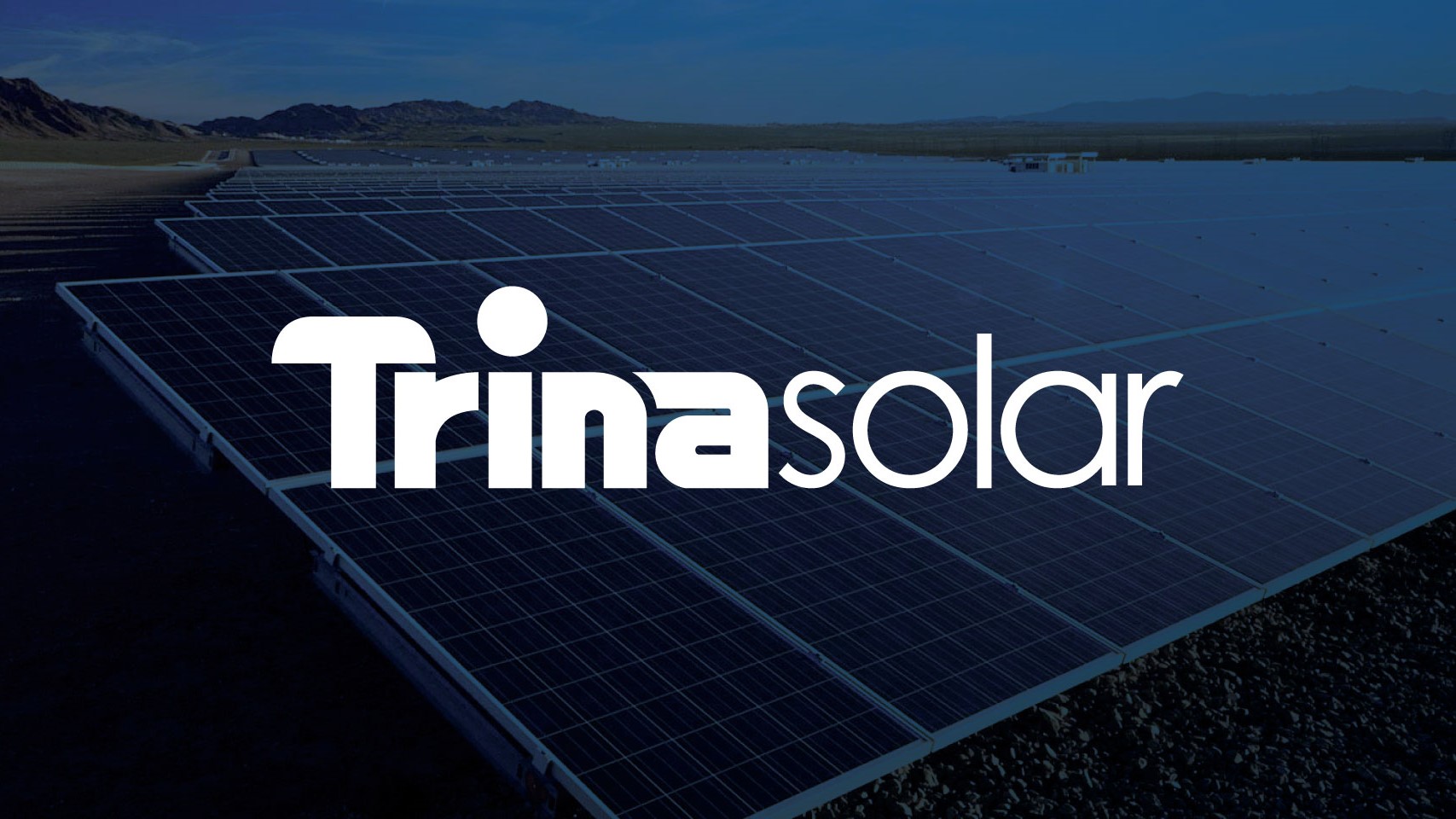As energy demand grows fueled by AI and vehicle electrification, Azerbaijan is actively developing new interconnections with the West, especially for green energy exports, Azerbaijan’s Deputy Minister of Energy Orkhan Zeynalov told NE Global in an exclusive interview in Baku.
“The EU is our strategic partner in energy,” Zeynalov said on the sidelines of the Baku Energy Forum on June 3 ahead of the high-level energy dialogue with the European Commission in Brussels on June 13. He reminded that the memorandum signed in 2022 is a comprehensive document envisaging the doubling of the gas supply volumes to Europe as well as green energy interconnections, methane emission reduction and the investment financing to the infrastructure equities.
Zeynalov reminded that parallel to the 11th Southern Gas Corridor Advisory Council Ministerial Meeting on April 24, Baku hosted the third edition of the Green Energy Advisory Council. “This is very timely because Azerbaijan has embarked on the journey of the green transition. Internally we have 10 green energy projects by 2027. They will deploy two GW of green energy in next two years – $2.7 billion FDI will be directed. At the same time in order to balance the grid, to secure the stability of the grid we’re investing in battery storage so we’re planning additional 250 MW of the battery systems to stabilize those new volumes and after 2027 within the phase two of the three-phase development we have additional 10 projects – offshore wind, onshore wind, solar projects, etcetera – so by 2030 we will deploy more than six GW of additional green energy – four GW of that will be exported mainly from the offshore wind farms and here we come to the regional interconnector projects,” Azerbaijan’s Deputy Energy Minister said.
Building new infrastructure for renewable energy supply to Europe
Azerbaijan is planning four green energy interconnectors, Zeynalov told NE Global. Regarding the first project, he said his country is working with Georgia, Romania and Hungary on the Caspian-Black Sea-Europe Green Energy Corridor. “The feasibility study is already under way and on the concluding phases, in the coming months we will have a commercial investment model,” he said. “The potential here is very good, the source will be windfarms offshore Azerbaijan going all the way though the HVDC (high voltage direct current) cable to Georgia and the subsea cable through the Black Sea to Romania and entering Hungary. Bulgaria has expressed interest. So, in that case we have already submitted the application to the 10-year network development plan and our joint venture, which has been established in Bucharest this year, the GECO Green Energy Corridor Power Company and next year we will also apply for PMI – Project of Mutual Interest from the Commission. This is a strategic project because first it provides connectivity between the Caspian Sea, Black Sea and Southeast Europe. Second, if you see the prices generally in Southeast Europe are a bit high so the extra energy can also stabilize the market and lower the prices so it’s very good for the end customers. We plan to up to export four GW but in a phased approach – 1.3 GW, 1.3 GW, 1.3 GW. So, at each phase there will be one cable, and the start is planned for 2032,” he said.
Zeynalov also noted that Azerbaijan plans to begin hydrogen production by 2035 as part of its Caspian-Black Sea-Europe Green Energy Corridor.
Central-Asia-Azerbaijan green energy corridor
The second green energy project – the Central-Asia-Azerbaijan Corridor – is strategically important from the political, economic and energy security point of view, Zeynalov said. He reminded that a strategic partnership agreement on the development and transmission of green energy between the Azerbaijani, Kazakh and Uzbek governments was signed by the leaders of the three countries on November 13, 2024, at the COP29 climate conference.
“We have great interest from the Saudi Arabia side. The Saudi electricity company has signed with the three countries the initial memorandum of interest on the project, particularly the transmission component and the joint venture for the project will be headquartered in Baku. Next month the JV documents will be signed in Baku. So, feasibility is also starting soon and most importantly there is a good potential to connect this corridor with the Caspian Sea-Black Sea so we can talk about a larger inter-connected corridor starting all the way from Central Asia all the way to Europe,” he said, adding that there is also big interest from Chinese companies, including China Energy, Power China, Datang Corporation in solar, offshore wind, onshore wind, battery storage and pumped hydro storage.
Azerbaijan-Turkey green energy corridor
“The third interconnector is the Azerbaijan-Turkey green energy corridor. It starts from the Nakhchivan region of Azerbaijan. The feasibility study has been just completed by the Boston Consulting Group (BCG) and the final report has been submitted to the government. It has two components. One component is the green energy zone in Nakhchivan, creating green volumes, mostly solar because the radiation level is higher in Nakhchivan but there is also some potential for wind energy. The second component is the interconnector to Turkey and for that we have explored four options: 0.5 GW, one GW, 1.5 and three GW of export. Again, HVDC is being considered so this issue will be reviewed and considered by the task force between Azerbaijan and Turkey. This is also a very important project, and it has two options: One route is direct export from Nakhchivan to Turkey and the alternative route is from Jabrayil hub in mainland Azerbaijan through the Zangezur to Nakhchivan and then Turkey. Both options have been explored in the BCG report,” Azerbaijan’s Deputy Energy Minister said.
Azerbaijan–Georgia–Turkey–Bulgaria green power project
“We have received a proposal from the Bulgarian side during COP29 for a proposed East-West new energy corridor. Bulgaria is trying to become an energy hub in the region soon and this project – Azerbaijan-Georgia-Turkey-Bulgaria connection – starting again from Azerbaijan, land route to Georgia, land route to Turkey and all the way to Bulgaria and to Europe. For this corridor we have just finalized within the working group the scope in terms of reference (ToR), and the next stage is to start consultancy work for the feasibility. This corridor can at some point also merge with the Nakhchivan-Turkey corridor somewhere in Turkey,” Zeynalov said.
Electrification
He reminded that during the opening of the Baku Energy Week, the final investment decisions were approved for the 240 MW Shafag Solar Power Plant (SPP) and the Sangachal Terminal Electrification (STEL) projects. Using the virtual power transmission model, the electricity generated at the Shafag will be transmitted to Azerenergy in Jabrayil, and an equivalent amount of electricity will be transmitted by Azerenergy to the Sangachal terminal in Baku. This will allow for an approximately 50 percent reduction in emissions from terminal operations during the future operation of the Sangachal terminal, Zeynalov said, adding, “In general the green project will be used to decarbonize the oil and gas project.”


